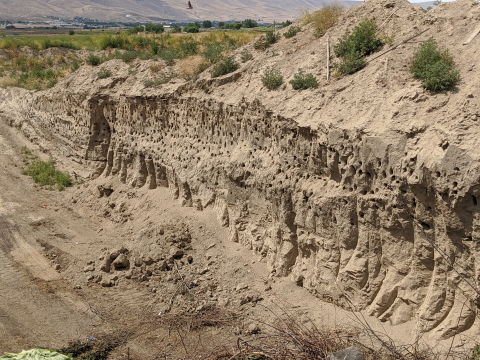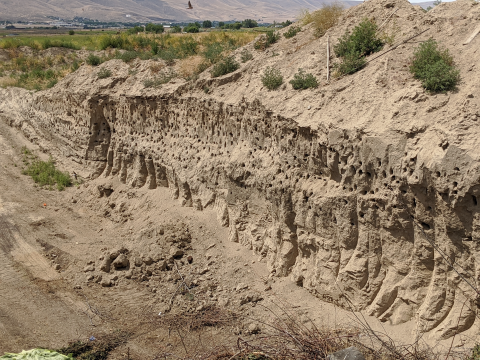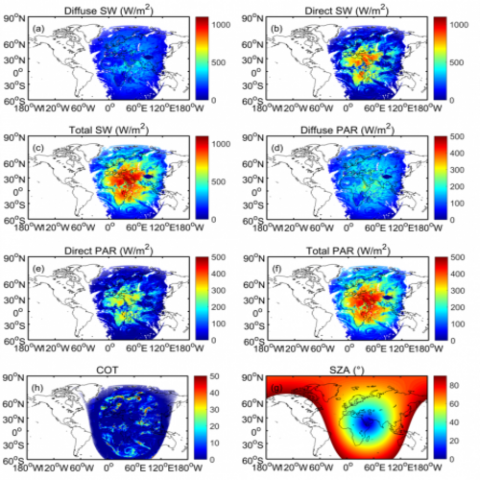Viral genome assembly annotations from terabase metagenomes (TmG.1.0) from uncultivated soil collections from the IAREC field sites in Washington (IAREC), Kansas (KBPS), and Iowa (COBS), USA. Uncultivated virus Genomes (identified from soil metagenome datasets) Data DOI Package.
Filter results
Category
- (-) Earth System Science (102)
- (-) Data Analytics & Machine Learning (9)
- (-) Weapons of Mass Effect (4)
- Scientific Discovery (240)
- Biology (146)
- Human Health (85)
- Integrative Omics (65)
- Microbiome Science (28)
- National Security (21)
- Computational Research (18)
- Computing & Analytics (15)
- Energy Resiliency (10)
- Chemistry (8)
- Computational Mathematics & Statistics (6)
- Visual Analytics (6)
- Renewable Energy (5)
- Chemical & Biological Signatures Science (4)
- Coastal Science (4)
- Data Analytics & Machine Learning (4)
- Atmospheric Science (3)
- Ecosystem Science (3)
- Cybersecurity (2)
- Distribution (2)
- Electric Grid Modernization (2)
- Energy Efficiency (2)
- Energy Storage (2)
- Grid Cybersecurity (2)
- Plant Science (2)
- Solar Energy (2)
- Bioenergy Technologies (1)
- Computational Mathematics & Statistics (1)
- Grid Analytics (1)
- High-Performance Computing (1)
- Subsurface Science (1)
- Terrestrial Aquatics (1)
- Transportation (1)
- Wind Energy (1)
Tags
- Soil Microbiology (13)
- sequencing (9)
- Metagenomics (7)
- Omics (7)
- Type 1 Diabetes (6)
- Autoimmunity (5)
- Machine Learning (5)
- Biomarkers (4)
- Genomics (4)
- Mass Spectrometry (4)
- Microbiome (4)
- Molecular Profiling (4)
- Climate Change (3)
- Fungi (3)
- IAREC (3)
- Mass spectrometry-based Omics (3)
- metagenomics (3)
- Predictive Modeling (3)
- Sequencing (3)
- soil microbiology (3)
- Alternative Splicing (2)
- Biological and Environmental Research (2)
- High Throughput Sequencing (2)
- omics (2)
- Proteomics (2)
- Spectroscopy (2)
- microbiome stability (1)
- MultiSector Dynamics (1)
- species volatility (1)
- Viruses (1)
Data Science & Biostatistics
Category
Dr. Paul Piehowski is the Proteomics team leader for PNNL’s Environmental and Molecular Sciences Division and the Environmental Molecular Sciences Laboratory (EMSL) user program. Piehowski is an analytical chemist whose research is focused on the application of mass spectrometry to biological...
Category
Dr. Gao obtained her Ph.D degree in Chemistry from institute of chemistry, Chinese Academy of Science. His Ph.D research focused on multiscale modeling of morphology and properties of polymeric materials, polymer processing and unveiling the process–properties relationships. (atomic to coarse...
Category
Complete replicate terabase metagenome (TmG.2.0) of grassland soil microbiome collections from KPBS field site in Manhattan, KS. Metagenome (unclassified soil sequencing) Data DOI Package, version 2.0.
Category
Complete replicate terabase metagenome (TmG.2.0) of grassland soil microbiome collections from COBS field site in Boone County, IA. Metagenome (unclassified soil sequencing) Data DOI Package, version 2.0.
Category
Complete replicate terabase metagenome (TmG.2.0) of grassland soil microbiome collections from IAREC field site in Prosser, WA. Metagenome (unclassified soil sequencing) Data DOI Package, version 2.0.
Category
The Human Islet Research Network (HIRN) is a large consortia with many research projects focused on understanding how beta cells are lost in type 1 diabetics (T1D) with a goal of finding how to protect against or replace the loss of functional beta cells. The consortia has multiple branches of...
Datasets
0
The influence of tidal inundation dynamics on below ground carbon pools is poorly understood across coastal terrestrial-aquatic interface (TAI) ecosystems. The dynamic environmental conditions of tidally-influenced landscapes, the chemically complex nature of carbon compounds, the diverse nature of...
Category
Datasets
3
The Phenotypic Response of the Soil Microbiome to Environmental Perturbations Project (Soil Microbiome SFA) at Pacific Northwest National Laboratory is a Genomic Sciences Program Science Focus Area (SFA) Project operating under the Environmental Microbiome Science Research Area. The Soil Microbiome...
Datasets
23
Category
Datasets
1
Category
Datasets
1
Category
Datasets
54
Category
Datasets
1
Datasets
1












